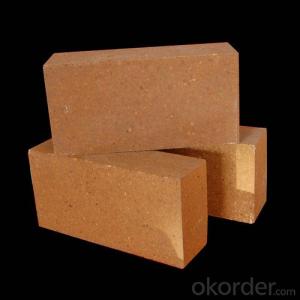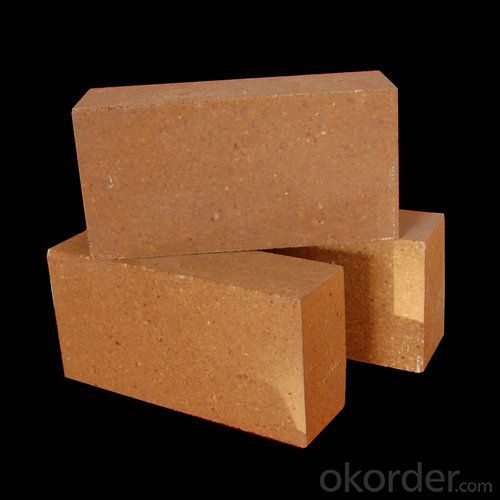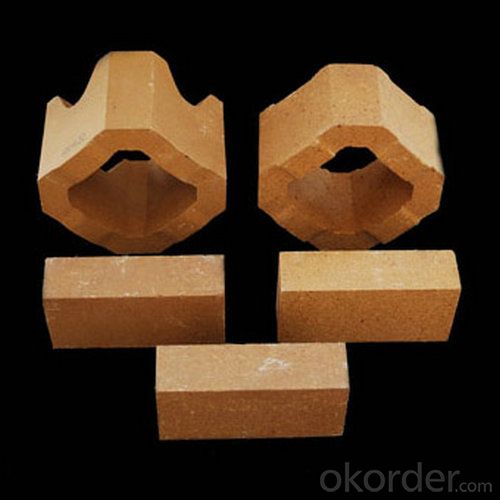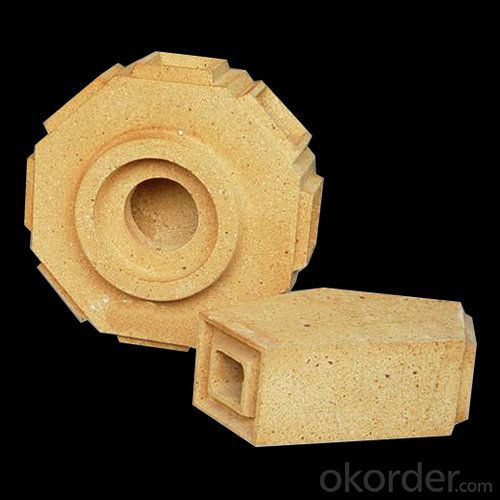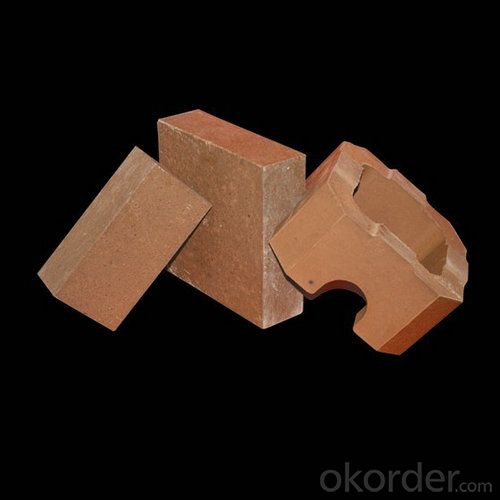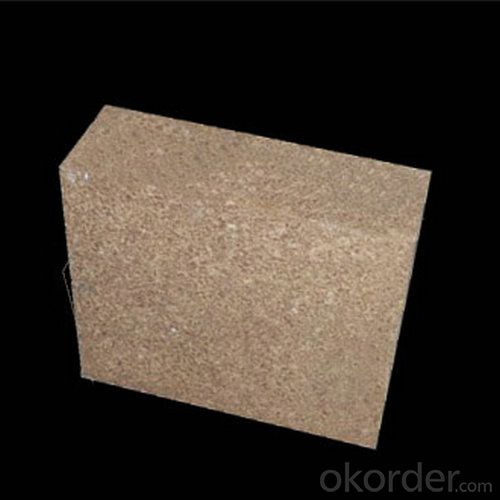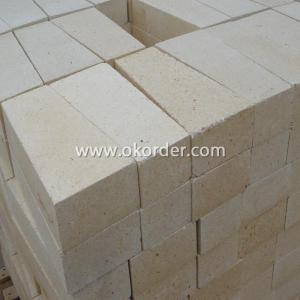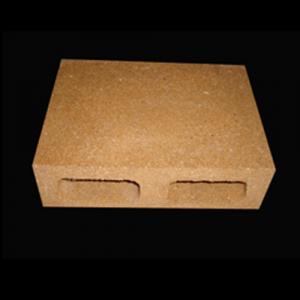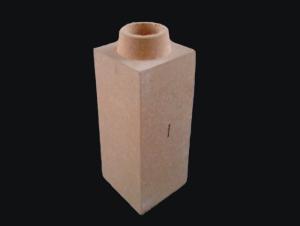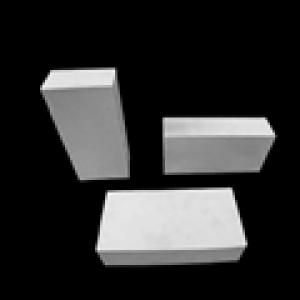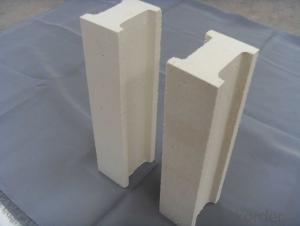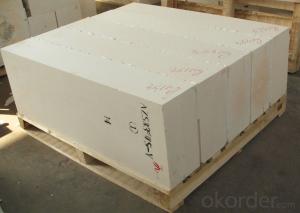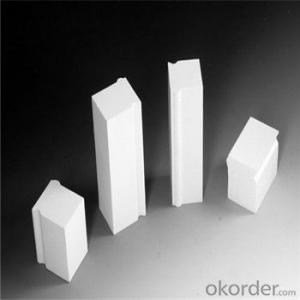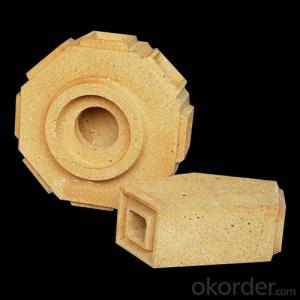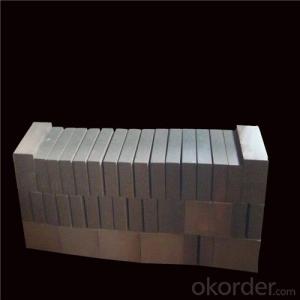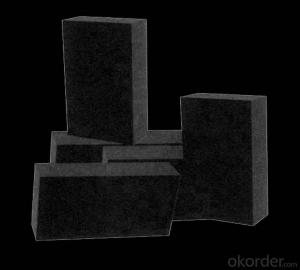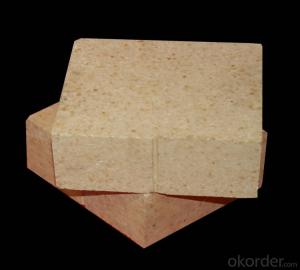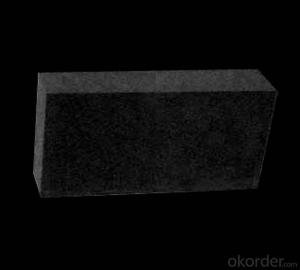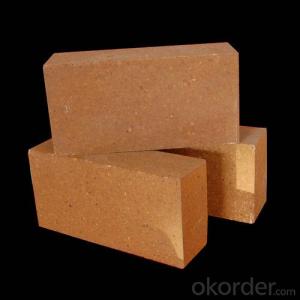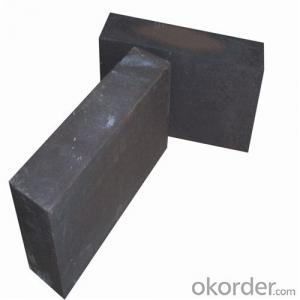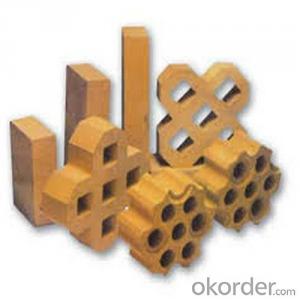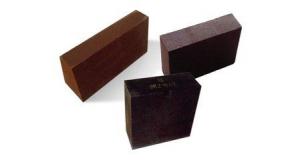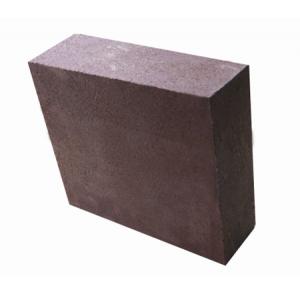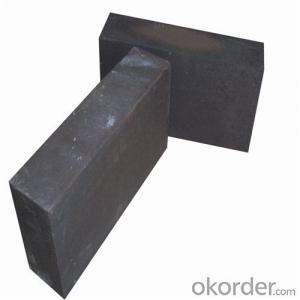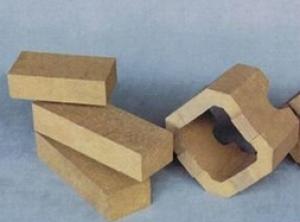High-Temperature Magnesite Chrome Brick for Cement Rotary Kiln Over 1700℃
- Loading Port:
- Tianjin
- Payment Terms:
- TT OR LC
- Min Order Qty:
- 1 m.t.
- Supply Capability:
- 20000 m.t./month
OKorder Service Pledge
OKorder Financial Service
You Might Also Like
General Information of Magnesite-Chrome Brick
CMAX magnesite-chrome brick is made of high quality magnesia and chrome ore.
CMAX direct-bonded magnesite-chrome brick is made of low impurity chrome ore and high purity magnesia and sintered at high temperature over 1700℃.
CMAX semi-rebonded and rebonded magnesite-chrome bricks are made partially or fully of synthetic fused clinkers. They are shaped under high pressure and sintered at very high temperature.
Feature of Magnesite-Chrome Brick
Good high-temperature performance
High thermal shock resistance
Strong slag resistance
High mechanical strength
Application of Magnesite-Chrome Brick
Cement rotary kiln
Non-ferrous furnace
Images of Magnesite-Chrome Brick
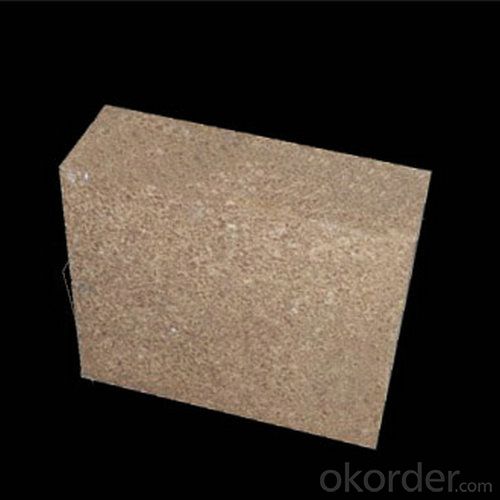
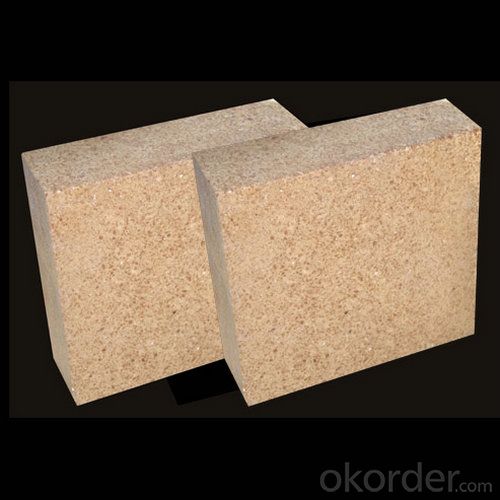
Technical Data of Magnesite-Chrome Brick
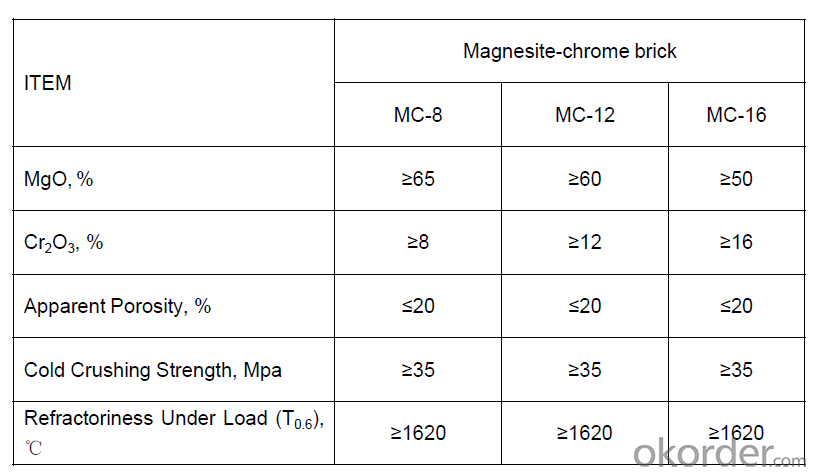
Company Introduction
Who CNBM is
CNBM is a Fortune 500 and a governmental owned National Building Material company in Beijing, China.
What CNBM Can Do
We can supply ALL KINDS OF REFRACTORIES BRICK/CASTABLE and CERAMIC FIBER PRODUCTS in high quality and competitive price.
What Certification CNBM Have
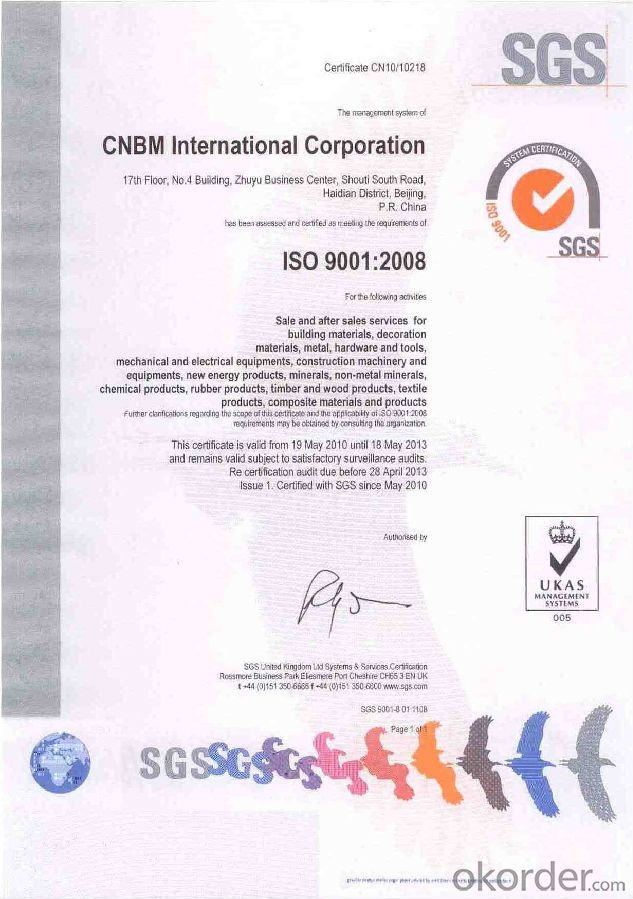
FAQ
If I need your offer, what information do you need?
In order to choose suitable products, it will be appreciated to provide us the information, such us specification, technical data, order quantity, products application etc.
If any question, please contact us freely.
How do you control the products quality?
With strict quality control system throughout the materials selection and production process, our refractory and ceramic fiber products quality is effectively controlled to meet customer requirements.
From the raw materials selecting, our quality control begin. The quality certificates of raw materials are required and each batch will be tested before using. During production, the quality control are conducted by workers and then each piece will be sorted and examined by quality supervisor.
I’m not satisfied with the refractory materials I used before, can you propose more suitable pro
Yes. Please give us the problems you faced, your requirements and the technical data of the products you used before. That we will give you our suggestion and propose the solution based on your special requirements.
What’s the lead time for my order?
It depends on customers’ requirements and our production schedule. And usually we need 30-60 days for refractory bricks,10-25 days for unshaped refractory materials and 10-20 days for ceramic fiber blankets.
Can you offer Door-to-Door delivery?
Yes, but only for some countries such us U.S., UAE, Saudi Arabia, Iran, and Russia, etc.
What is the minimum quantity?
There is no minimum order quantity. Depending on the item and processing, there may be a minimum production required, however we can offer a quotation based only on the quantity you need.
- Q: What are the differences between magnesium chrome bricks, such as direct bonding, re bonding, semi bonding, CO sintering and chemical bonding? Hope expert advice..
- The process of firing magnesia chrome bricks is roughly the same as that of magnesia bricks. In order to eliminate the brick during firing, due to MgO and Cr2O3, Al2O3
- Q: Process for producing magnesia chrome brick
- The oxide of iron reacts to produce a loose effect caused by the expansion of the spinel. Also, the magnesia chrome brick can be made from the synthetic common sintered material. In addition, there are non burned magnesia chrome bricks, for example, non burned magnesia chrome bricks combined with inorganic magnesium salt solutions. The unfired magnesia chrome brick has the advantages of simple production process, low cost and good thermal stability, but the strength of the high temperature is far less than that of the burnt brick. In the late 50s, a so-called "direct bonding" magnesia chrome brick was developed. The characteristics of this brick raw material is pure, high firing temperature, periclase and spinel phase with high temperature directly, silicate and other low melting point phase for island distribution, therefore, significantly improve the high temperature strength and slag resistance of brick.
- Q: Refractory brick, high alumina brick, magnesia chrome brick, magnesia brick, clay brick, which type of high temperature refractory brick?
- High alumina brick clay brick up to 1700 degrees above 1500 degrees -1750 degrees of magnesia brick and magnesia chrome brick 1500-1650 degrees.
- Q: What are the environmental hazards of magnesia chrome refractory bricks?
- Nowadays, the use of magnesia chrome bricks, especially in cement kilns in the construction industry, has been required to be free of chromium, and the cement products shall not be tested with chromium.
- Q: How much is magnesium chrome brick a ton?
- The price of bricks in different places is not the same. The average price is about 3500 yuan
- Q: Magnesia chrome brick
- The fine powder compacts after calcination produced by magnesia - chrome ore grinding method, brick with magnesia coarse particles, are effective measures to eliminate the effect of loose. Compared with the common magnesia chrome brick, the magnesia chrome brick made by this method has lower porosity, higher compressive strength, higher softening temperature and higher flexural strength. Compacts with chrome magnesite powder, magnesia chrome brick by synthetic magnesia chrome sand made of high-temperature calcination, slag resistance and high temperature strength are better than other magnesite chrome brick.
- Q: Magnesium chrome brick price?
- Dashiqiao magnesium brick factory of China Building Materials Academy is a joint stock company invested, constructed and managed by China Building Materials Academy.The plant was built in 1992, officially put into operation in 1993, covers an area of 89 thousand square meters, has a long 118 meters, an annual output of 30 thousand tons of high temperature tunnel kiln production line. The group has 1200 employees, 6 senior engineers, more than 20 engineers and technicians, and has strong technical force. Group's total assets of 5.5 million, with an annual output value of 600 million. Profit and tax 65 million yuan.
- Q: What are the types of magnesia chrome bricks for industrial use?
- It is possible to judge by the concrete kiln. The magnesium chrome bricks produced by real gold company are very good. Our factory purchased them the year before last, and their technicians were very professional, and gave us very good suggestions.
- Q: What is a half combination of magnesia chrome bricks?
- Opacifying particles as periclase spinel crystal structure, fully developed, as part of account of solution structure and matrix.
- Q: What are the main raw materials of magnesia chrome bricks?
- Magnesium alloys are alloys based on magnesium and other elements. Its characteristics are: small density (1.8g/cm3 magnesium alloy or so), high specific strength, high modulus of elasticity, good heat dissipation, good shock resistance, greater impact load capacity than aluminum alloy, good resistance to organic and alkaline corrosion. The main alloying elements are aluminum, zinc, manganese, cerium, thorium, and a small amount of zirconium or cadmium.
Send your message to us
High-Temperature Magnesite Chrome Brick for Cement Rotary Kiln Over 1700℃
- Loading Port:
- Tianjin
- Payment Terms:
- TT OR LC
- Min Order Qty:
- 1 m.t.
- Supply Capability:
- 20000 m.t./month
OKorder Service Pledge
OKorder Financial Service
Similar products
Hot products
Hot Searches
Related keywords
